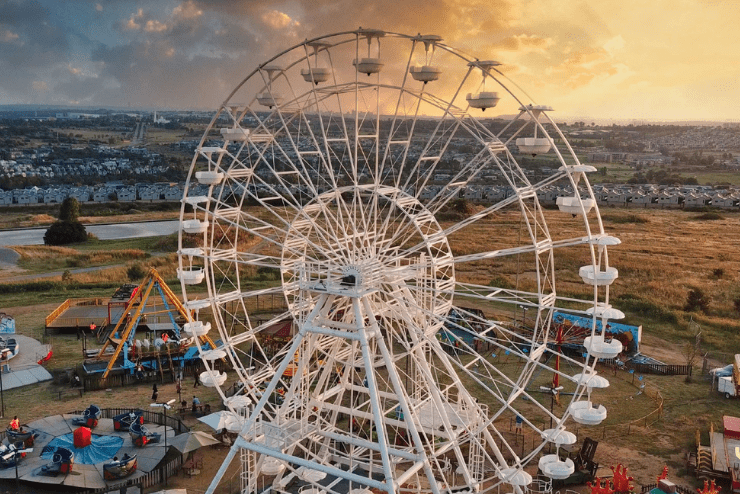The Buzz on Johannesburg North Attractions
The Buzz on Johannesburg North Attractions
Blog Article
Johannesburg North Attractions Fundamentals Explained
Table of ContentsUnknown Facts About Johannesburg North AttractionsThe Definitive Guide to Johannesburg North AttractionsMore About Johannesburg North AttractionsThe Facts About Johannesburg North Attractions RevealedThe Facts About Johannesburg North Attractions UncoveredAbout Johannesburg North AttractionsThe Definitive Guide to Johannesburg North Attractions
You should keep security in mind and travelers should continue to be sharp at all times when in unknown surroundings. Talk with the locals when you are in town to learn about the area you are remaining in. Johannesburg North attractions. When on the street (this does not relate to mall and various other secure environments) finest basic suggestions is to attempt your ideal to look like a local and to avoid showing any type of kind of wide range
The Best Guide To Johannesburg North Attractions
Professor Revil Mason O. J. (Thomson, 1946) checked out the Witwatersrand's pre-colonial background. His historical job blew up the 'em pty land' misconception, according to which the region was without human habitation prior to the arrival of European settlers. In his magazines Prehistory of the Transvaal: A Document of Human Task (1962) and Origins of Black People of Johannesburg and the Southern Western Central Transvaal Advertisement 3501880 (1986 ), Teacher Mason showed the level of social and financial advancement in the area prior to Europeans set foot right here.

The Definitive Guide to Johannesburg North Attractions
In 1878, David Wardrop found gold in quartz capillaries at Zwartkop, north of Krugersdorp. In 1881, Stephanus Minnaar came throughout gold on the ranch Kromdraai, near the Cradle of Mankind.
In March 1886, an outcropping (soon to be called the Key Coral reef) was located, fairly fortunately, on Gerhardus Oosthuizen's ranch Langlaagte. Some state that the Lancastrian coal miner George Pedestrian uncovered this coral reef. One more itinerant English prospector, George Harrison (that had previously functioned in Australian mines) gotten a prospecting licence in respect of Langlaagte in Might 1886.
He determined to relocate on in a quest for greener fields, and disposed of his Langlaagte case for the handsome sum of 10. Alas: under lay the richest goldfield ever located. The discovery of this rich auriferous coral reef provoked a gold rush that signified completion of bucolic serenity in the southerly Transvaal.
It would, within six years, end up being the largest community in southerly Africa. Within a years, it would certainly make the Z. A. R. till then an anarchical and insolvent little state the most affluent country in Africa. By the millenium, the Z. A. R. was to surpass Russia, Australia and the USA of America to come to be the world's leading gold producer, creating more than a quarter of the world's gold.
Our Johannesburg North Attractions Statements
It was referred to as Ferreira's Camp, named after Colonel Ignatius Ferreira. He was a Boer adventurer upon whom the British his response authorities had actually presented the status of Buddy of one of the most Distinguished Order of St Michael and St George (entitling him to the post-nominal letters C. M. G.) in gratitude for his function in the battle that had actually deposed the Pedi king Sekhukhune in 1879.
2 various other camps were developed: Meyer's Camp on the ranch Doornfontein, and Paarl Camp. The latter was nicknamed Afrikander Camp; many people from the Cape Swarm resolved there.

Johannesburg North Attractions Fundamentals Explained
This name acquired money by word of mouth, such that the State Secretary verified the name to the Mining Commissioner on 9 October 1886. Stands in the town were auctioned on 8 December 1886. While some stands were offered for 10, others were knocked down for as low as sixpence.
2 years later, these erven were to transform hands for as long as 750 each. The tented camps dwindled as a dorp of corrugated iron structures developed and broadened north of the mines located along the Main Coral Reef Roadway. Areas such as Jeppe's Community (where working-class immigrants erected their residences) and Doornfontein (where the upscale new 'Randlords' started to create their extravagant residences) were quickly added to the ever-expanding map of the community.
Some Known Incorrect Statements About Johannesburg North Attractions
In addition to the road names, there were no indicators of Johannesburg being located in a Dutch-speaking country. Years later on, C. W. Kearns O. J. (among the very first kids signed up at St John's College in 1898) would remember: 'A weird truth regarding Johannesburg was that, although it was in the [Boer Republic], nearly everyone talked English and also the Government servants dealt with one in English, unless they were first resolved in the Taal (or Low Dutch)'.
Britain had a passion in guaranteeing optimum conditions for gold manufacturing on the Witwatersrand, and that the gold was exported to London rather than Berlin right here an essential provided all the a lot more clamant by the Z. A. R.'s increasing toenadering with Germany. Mine proprietors were on a clash with Head of state Kruger, whose policy of monopolistic giving ins (usually given to his cronies) prevented mining business from procuring materials of materials (specifically dynamite) and labour on their very own, less expensive terms
Johannesburg North Attractions for Beginners
In 1890, Click Here the Volksraad had restricted the franchise to white guys who had lived in the Z. A. R. for fourteen years or longer, therefore invalidating many of the immigrants (that took place to be the significant factors to the fiscus). However, agitation for the vote was a mere pretext for promoting a different agenda; most uitlanders regarded themselves as short-term visitors and had no intention of remaining in the Z.
Report this page